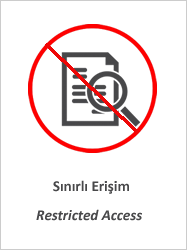Impact of intraoral scanning conditions on the accuracy virtual aligners (VA)
Citation
Camcı, H., & Salmanpour, F. (2022). Impact of intraoral scanning conditions on the accuracy virtual aligners (VA). Australasian Orthodontic Journal, 38(1), 102-110.Abstract
Objective: In recent years, clear aligners (CA) have become a popular treatment option whose efficacy depends upon the close adaptive fit of the appliance. The aim of this study was to evaluate micron-level surface imperfections found in virtual aligners (VA) caused by the conditions at the time of acquisition of the digital models required for appliance fabrication.Methods: Fifty patients were recruited for the study. Four digital models were acquired from each patient under four different conditions using a 3Shape TRIOS intra-oral scanner (Copenhagen, Denmark). The conditions for digital model acquisition were, Group 1: No saliva isolation and scanning in daylight (S + DL), Group 2: Saliva isolation and scanning in daylight (NS + DL), Group 3: No saliva isolation but scanning under reflected light (S + RL), Group 4: No saliva isolation but scanning in relatively dark conditions (S + RDC). For each of the 200 digital models, 1 mm thick VAs were created using the Appliance Designer (Copenhagen, Denmark) software. Using the Geomagic Control X (Geomagic; Morrisville, USA) program, the four VAs of each patient were overlaid and common boundaries were obtained by three planes of section. In all comparisons, the VAs in Group 2 were used as a reference and the three other groups were evaluated. Surface deviations between VAs were assessed using the quantitative data of maximum, minimum, negative mean, positive mean, root mean square (RMS), out of the total area (OTA).Results: Total surface deviation (OTA) was found to be the highest in Group 4 (9.57%). OTA values in Group 1 (7.19%) and Group 3 (7.02%) were similar. Of the other parameters, the greatest data was obtained from Group 4. The distribution of RMS values between groups was: 56 microns in group 1 (S + DL), 53 microns in group 3 (S + RL), 61 microns in group 4 (S + RDC). However, the data comparison indicated that there was no statistically significant difference between the groups.Conclusion: The conditions for obtaining digital models caused imperfections on the surface of the VAs. The total deviation (OTA) of 7-9% was considered excessive and so it was concluded that the conditions for obtaining digital models could affect the adaptation and success of CAs.
















